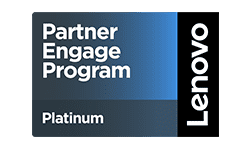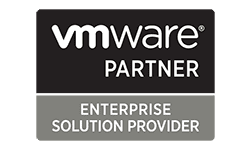What Is an Effective Talent Acquisition Program? Why Is It Essential?
A Talent Acquisition Program is a Strategic and Systematic Approach to Identifying, Attracting, and Hiring Top Talent for an Organization
Kelsey Young, Copywriter and Media Specialist
6 Min Read
In today’s competitive market it is essential to have a comprehensive and effective talent acquisition program to recruit, hire, and retain the best talent in the field.
In the context of the workplace, talent refers to an individual’s unique set of skills, abilities, and attributes that make them valuable to an organization. Talents can include both technical and soft skills, as well as personal qualities such as creativity, problem-solving ability, and leadership potential.
Organizations often seek to identify and leverage the talents of their employees to achieve their business goals and maintain a competitive edge. Effective talent management strategies can help companies attract, retain, and develop talented individuals, ultimately contributing to their long-term success.
Therefore, a talent acquisition program is a strategic and systematic approach to identifying, attracting, and hiring top talent for an organization. It typically includes activities such as workforce planning, sourcing candidates through various channels, evaluating candidates through assessments and interviews, and making job offers.

The goal of a talent acquisition program is to build a high-performing workforce that aligns with the company’s strategic objectives and contributes to its overall success. An effective talent acquisition program is key to building a strong and successful workforce and should be tailored to fit the needs of each business and organization.
The Three Pillars of Talent Acquisition
An effective talent acquisition program should include three key pillars: recruitment, selection, and onboarding. When these pillars are properly implemented, they will help ensure that your organization is able to identify and attract the right talent, assess and evaluate applicants, and successfully onboard new employees.
Recruitment
Recruitment is the first step in any effective talent acquisition program. The goal of recruitment is to identify and attract the most qualified candidates for open positions. There are many ways to go about recruiting, including job postings, recruiting agencies, online job boards, referrals, and social media. It’s important to use a variety of methods to ensure that you are reaching the widest pool of potential candidates. Additionally, it’s important to develop a comprehensive job description that includes all of the essential duties and responsibilities of the position, as well as the desired skills and experience. This will help ensure that you are targeting the right candidates for the job.
Selection
Once the recruitment process is complete, the next step is to assess and evaluate applicants. This is done through a series of interviews, assessments, and other activities designed to determine the best fit for the job. During this step, it’s important to create a fair and objective process that allows you to assess each candidate’s skills, experience, and qualifications. It’s also important to ensure that the selection process is compliant with all relevant employment laws and regulations.
Onboarding
The final step in an effective talent acquisition program is onboarding. Onboarding is the process of introducing new employees to the organization and providing them with the necessary tools and information to be successful in their new role. This includes providing them with job training and orientation, introducing them to their colleagues, and helping them understand the organization’s culture and values. Onboarding is a crucial step in the process, as it helps ensure that new employees are set up for success.
Talent Acquisition Strategies
In addition to the three pillars of an effective talent acquisition program, there are also a variety of strategies and tactics that can be used to enhance the program.
While the pillars provide an effective model for a program, a company still needs to implement various strategies to move their talent through each step.
While no two businesses will have the same strategy, the following are the most effective talent acquisition strategies:
- Developing a talent pipeline: A talent pipeline is a process of continuously recruiting and cultivating talent for future hiring needs. Use social media, employee referrals, and job boards to find top-tier talent. By developing a talent pipeline, organizations can ensure that they are always prepared for future hiring needs and can quickly fill open positions.
- Engage prospects with personalized, time, cross-channel nurture messaging: this builds relationships and trust, increase the likelihood of a positive candidate experience, keep the company top-of-mind for candidates, and improve the chances of successful talent acquisition and retention.
- Tie their candidate-sourcing quotas and hiring targets to business goals: this ensures alignment between talent acquisition and the overall strategic objectives of the organization, improves the accuracy of workforce planning, and helps to optimize recruitment efforts for better business outcomes.
- Prioritize a top-tier candidate experience (CX) for job seekers they interview: this helps to create a positive impression of the company, improves the candidate’s perception of the hiring process, increases the likelihood of attracting top talent, and can lead to a more engaged and productive workforce.
- Look for ways to streamline and automate the core recruitment process: Technology can be a powerful tool in the talent acquisition process. Organizations can use technology to streamline the recruiting process, automate certain tasks, and engage with potential candidates.
- Put diversity, equity, and inclusion (DEI) at the forefront of the hiring process: DEI is important in the workplace because it fosters a more inclusive and respectful environment, promotes creativity and innovation, improves employee morale and retention, and ultimately leads to better business outcomes and success.
- Utilizing data and analytics: Data and analytics can provide invaluable insights into the effectiveness of a talent acquisition program. By leveraging data, organizations can identify trends, target the right candidates, and optimize the recruiting process.
- Offering competitive compensation and benefits: Offering competitive compensation and benefits is an important part of any successful talent acquisition program. Organizations should ensure that they are offering competitive salaries, bonuses, and benefits in order to attract and retain top talent.
Conclusion
An effective talent acquisition program is essential for any organization looking to build a strong and successful workforce. By implementing the three pillars of a talent acquisition program – recruitment, selection, and onboarding – organizations can ensure that they are able to identify and attract the right talent, assess and evaluate applicants, and successfully onboard new employees.
Additionally, organizations should consider leveraging a variety of talent acquisition strategies to further optimize the process.
Global Data Consultants, LLC (GDC) understands that flexible work management is critical to maintaining a competitive edge in today’s fast paced environment. Partnering with GDC to acquire talent and meet the demands of your business means you have a dedicated partner that implements proven strategies to build a productive and talented team.
Contact a GDC Talent Acquisition Expert today to discuss your unique workforce and staffing needs.
By investing in an effective talent acquisition program, organizations can ensure that they are able to recruit, hire, and retain the best talent.




